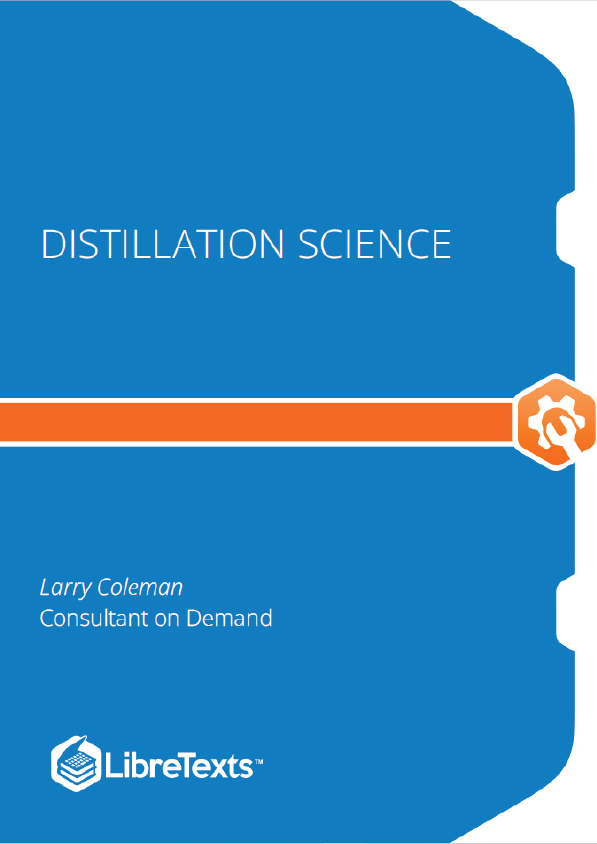Distillation Science (a blend of Chemistry and Chemical Engineering)
This is Part II, Vapor Pressure of a ten-part series of technical articles on Distillation Science, as is currently practiced on an industrial level. See also Part I, Overview for introductory comments, the scope of the article series, and nomenclature. Part II, Vapor Pressure deals with the existing pure component vapor pressure (VP) equations normally found in textbooks. The content of this article is referred to in subsequent articles. The goal of this article is to explain the limitations of these less sophisticated VP equations, to show how best to use them, and to set up the introduction of a superior VP equation form in Part IV. The original Clausius-Clapeyron equation relating VP, temperature, vaporization molar volume change (ΔV ) and latent heat of vaporization (ΔH ) dates back to mid-19th century and is derived from thermodynamic principles. The derivation is given in many college freshman-level texts and results from thermodynamic equilibrium between liquid and vapor phases. First, the differential of pressure with respect to system temperature (for both vapor and liquid) is re-arranged to:
If (assumption 1) the vaporization molar volume change (ΔV ) is set equal to the saturated vapor volume (V) by assuming the boiling liquid’s molar volume is essentially zero; and if (assumption 2) the “Ideal Gas Law” (PV=RT) can hold for this saturated vapor, then Equation in differential form the relationship becomes:
When integrated, this results in the simplified Clausius-Clapeyron relationship that is found in most textbooks. However, there are limited conditions for which the above two assumptions are nearly correct: non-complex molecular structure and very low pressure (say, below atmospheric or very near atmospheric). For most compounds, and for most pressures encountered in normal industrial processes, neither of these assumptions holds very well and accuracy gets increasingly worse as pressure increases beyond atmospheric.
For real compounds and pressures normally encountered in industry, a term is added to the “Ideal Gas Law” ( ) called compressibility, ; so then the relationship becomes:
where compressibility Z is a function of that fluid’s pressure, temperature, and other physical properties such as discussed in the Part III. Note that Equation ( ) holds for both vapors and liquids: with Z being vapor compressibility, Z being liquid compressibility, and ΔZ being the change in compressibility with vaporization. Now Equation ( ) can be transformed into a more usable relationship for all fluids and all sub-critical pressures. In differential form, it is:
It can now be understood that ΔZ is the measure of the net effect of removing above assumptions (1) and (2) that allowed Equation ( ). For most fluids near atmospheric pressure, ΔZ is about 0.95 – 0.99, but as pressures increase toward a fluid’s critical point (where vapor and liquid merge at a singularity), ΔZ goes to zero. ( But of course, ΔH also goes to zero at the critical point, so the ratio ΔH ΔZ becomes undefined at this singularity). The evaluation of ΔZ normally requires use of an Equation of State (EOS), which is discussed in Part V. Using such an EOS to assess ΔZ would allow vapor pressure vs temperature data to exactly align with ΔH values. In Part IV, Equation ( ) will be further developed and integrated without use of an EOS, up to pressures close to critical (usually about 95% of critical pressure in pure component systems). Returning back to the above integrated form of Clausius-Clapeyron, Equation ( ) suggests the commonly used empirical means to curve-fit VP data over small temperature/pressure ranges:











